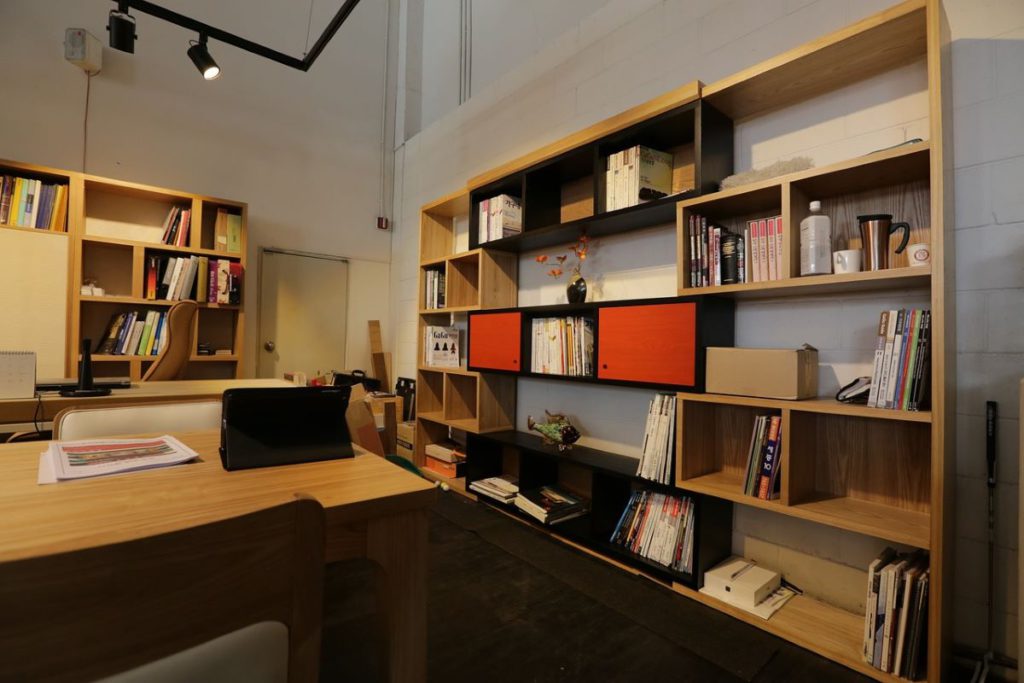In today’s rapidly evolving world, innovation has become a cornerstone of success for businesses, institutions, and individuals alike. While innovative thinking is often associated with groundbreaking ideas and creative solutions, the environment in which these ideas are nurtured plays a crucial role in fostering and amplifying innovation. One often overlooked yet significant factor is interior architecture. The design and arrangement of interior spaces have the power to spark innovation, inspiring individuals to think differently, collaborate more effectively, and push the boundaries of what’s possible.
Creating a Stimulating Environment

Interior architecture goes beyond mere aesthetics; it shapes the very essence of a space. The deliberate arrangement of furniture, the choice of colours, lighting, textures, and even acoustics collectively create an environment that can either stifle or fuel creativity. A well-designed interior space can stimulate the senses and trigger new thought patterns. For example, a workspace featuring open layouts, vibrant colours, and natural light fosters a sense of freedom and freshness that encourages creative thinking.
Pushing Boundaries Through Innovative Design
Innovation often necessitates breaking away from the conventional and exploring uncharted realms. Interior architecture can seamlessly reflect this principle by introducing elements of innovative design. For instance, the incorporation of suspended ceiling metal challenges traditional spatial norms, inviting occupants to perceive their surroundings through a fresh lens. Similarly, collaborating with reputable suppliers specialising in suspended ceiling materials offers an opportunity to integrate novel textures and materials into the design, sparking unconventional thought processes. By embracing these distinctive approaches to design, interior architecture holds the potential to disrupt established patterns of thinking and inspire individuals to embark on innovative pathways.
Cultivating Collaboration and Interaction
Collaboration is a driving force behind many innovative breakthroughs. Interior architecture can facilitate collaboration by creating spaces that encourage interaction. Lounge areas, communal workspaces, and brainstorming zones foster spontaneous conversations and idea exchanges. When individuals from diverse backgrounds and disciplines come together in a thoughtfully designed environment, the cross-pollination of ideas occurs naturally, leading to the emergence of novel solutions.
Flexible Spaces, Fluid Ideas
The adaptability of an interior space can directly impact the adaptability of ideas within it. Spaces that can easily be reconfigured to suit different purposes enable occupants to experiment with their surroundings, sparking new approaches to problem-solving. Moveable furniture, modular layouts, and multi-functional rooms give individuals the power to shape their environment according to their creative needs. This flexibility supports the ebb and flow of innovative thinking.
Stimulating the Senses
Innovative thinking is often associated with sensory experiences that trigger cognitive connections. Interior architecture can engage the senses in various ways to prompt creative insights. Thoughtful use of colours can evoke emotions and associations, while textured surfaces and natural materials can ground individuals and connect them to their surroundings. Additionally, incorporating elements like water features or greenery can provide visual and auditory stimuli that promote relaxation and inspiration.
Balancing Solitude and Socialisation
Innovation thrives in an environment that offers both moments of solitude for focused introspection and opportunities for collaborative engagement. Interior architecture can strike this balance by offering a range of spaces, from quiet corners for deep thinking to communal areas for group discussions. The seamless transition between these spaces supports the creative process, allowing individuals to delve into their thoughts and then share and refine their ideas with others.
Designing for Well-being
A crucial aspect of nurturing innovation is the well-being of the occupants. A space that promotes physical and mental well-being can have a direct impact on cognitive abilities. Interior architecture that prioritises ergonomics, proper lighting, and good air quality can enhance comfort and focus, enabling individuals to channel their energy into creative endeavours. When the mind and body are aligned, innovation can flow more freely.
Case Study: The Innovative Hub
Consider the case of a tech company’s headquarters designed with innovation in mind. The interior architecture features an array of spaces, from traditional offices to unconventional collaboration zones. The central atrium boasts a vibrant, dynamic design, serving as a hub for serendipitous interactions. Flexible seating arrangements and writable surfaces encourage impromptu brainstorming sessions. Natural light floods in through large windows, and green walls bring the outdoors inside. The result is an environment that sparks creativity and encourages employees to think beyond their usual confines.
The Future of Innovation-Driven Design
As the importance of innovation continues to grow, the role of interior architecture in shaping creative environments becomes even more significant. Designers are exploring cutting-edge concepts, such as biophilic design, which integrates natural elements into interior spaces to enhance well-being and stimulate innovative thinking. Virtual and augmented reality technologies are also being harnessed to create immersive environments that inspire creativity.
All in all, interior architecture is not just about aesthetics; it’s a powerful tool that can shape the way we think and innovate. From the arrangement of furniture to the choice of materials, lighting, and acoustics, every element of interior design contributes to the overall creative atmosphere. By creating stimulating environments, promoting collaboration, engaging the senses, and prioritising well-being, interior architecture has the potential to spark innovation in ways that go beyond imagination. As we look to the future, designing spaces that actively foster innovation will undoubtedly play a pivotal role in driving progress and shaping the world of tomorrow.
